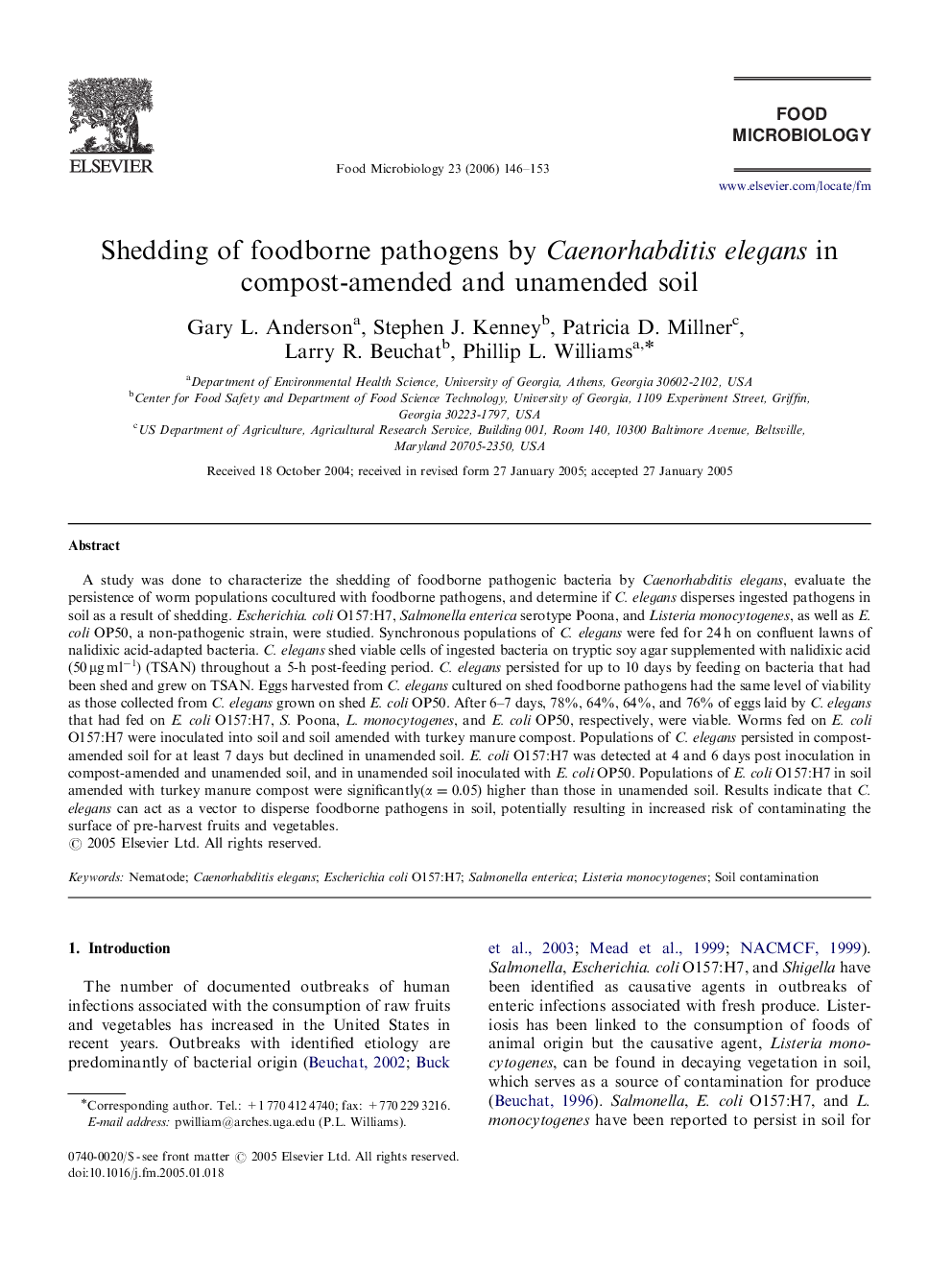| کد مقاله | کد نشریه | سال انتشار | مقاله انگلیسی | نسخه تمام متن |
|---|---|---|---|---|
| 4363895 | 1301584 | 2006 | 8 صفحه PDF | دانلود رایگان |

A study was done to characterize the shedding of foodborne pathogenic bacteria by Caenorhabditis elegans, evaluate the persistence of worm populations cocultured with foodborne pathogens, and determine if C. elegans disperses ingested pathogens in soil as a result of shedding. Escherichia. coli O157:H7, Salmonella enterica serotype Poona, and Listeria monocytogenes, as well as E. coli OP50, a non-pathogenic strain, were studied. Synchronous populations of C. elegans were fed for 24 h on confluent lawns of nalidixic acid-adapted bacteria. C. elegans shed viable cells of ingested bacteria on tryptic soy agar supplemented with nalidixic acid (50 μg ml−1) (TSAN) throughout a 5-h post-feeding period. C. elegans persisted for up to 10 days by feeding on bacteria that had been shed and grew on TSAN. Eggs harvested from C. elegans cultured on shed foodborne pathogens had the same level of viability as those collected from C. elegans grown on shed E. coli OP50. After 6–7 days, 78%, 64%, 64%, and 76% of eggs laid by C. elegans that had fed on E. coli O157:H7, S. Poona, L. monocytogenes, and E. coli OP50, respectively, were viable. Worms fed on E. coli O157:H7 were inoculated into soil and soil amended with turkey manure compost. Populations of C. elegans persisted in compost-amended soil for at least 7 days but declined in unamended soil. E. coli O157:H7 was detected at 4 and 6 days post inoculation in compost-amended and unamended soil, and in unamended soil inoculated with E. coli OP50. Populations of E. coli O157:H7 in soil amended with turkey manure compost were significantly(α=0.05α=0.05) higher than those in unamended soil. Results indicate that C. elegans can act as a vector to disperse foodborne pathogens in soil, potentially resulting in increased risk of contaminating the surface of pre-harvest fruits and vegetables.
Journal: Food Microbiology - Volume 23, Issue 2, April 2006, Pages 146–153